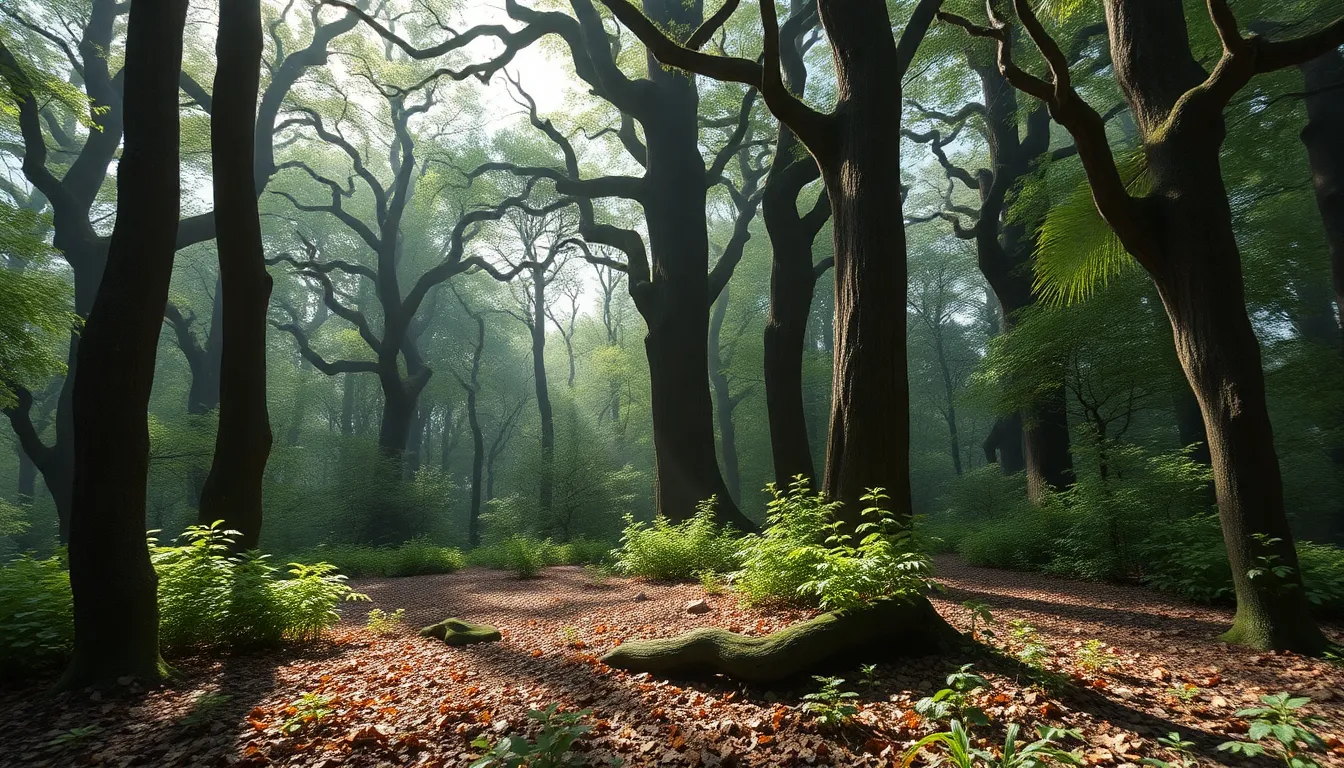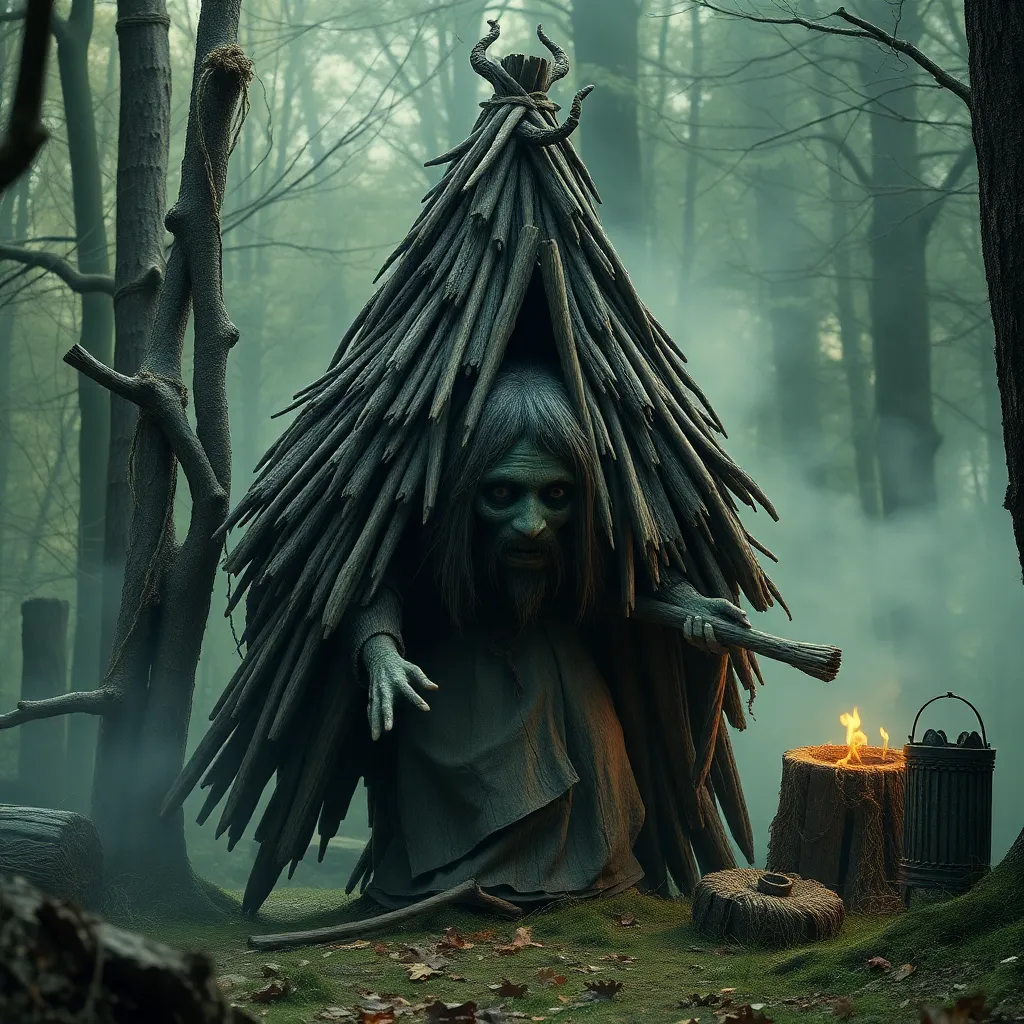The Sacred Grove: Nature’s Role in Mythical Narratives
I. Introduction
A sacred grove is a piece of forested land that is considered holy or sacred in various cultures. These groves often serve as sites for worship, rituals, and spiritual practices, and they hold significant meaning in the context of mythology.
Nature plays a crucial role in mythical narratives, serving as a backdrop for stories, a source of inspiration, and a character in its own right. This article will explore the intersection of nature, specifically sacred groves, and mythology, examining their historical context, symbolism, psychological impacts, and contemporary relevance.
II. Historical Context of Sacred Groves
Throughout history, many ancient cultures revered nature, seeing it as a manifestation of divine forces. Sacred groves were often integral to their spiritual practices and worldviews.
A. Ancient Cultures and Their Reverence for Nature
Many ancient civilizations viewed nature as a living entity, with spirits residing in trees, rivers, and mountains. This interconnectedness is reflected in their myths and rituals.
B. The Role of Sacred Groves in Different Civilizations
- Mesopotamia: Sacred groves were associated with deities and were often seen as places of refuge and divine communication.
- Ancient Greece: Groves were dedicated to gods such as Zeus and Artemis, where oracles, including the famous Oracle of Dodona, were located.
- Indigenous Cultures: Many indigenous peoples around the world maintain sacred groves, using them for rituals, healing, and connection to their ancestors.
III. Symbolism of Nature in Mythology
Nature embodies various symbols in mythology, often representing deeper truths about life, death, and the cosmos.
A. Nature as a Reflection of Divine Forces
In many myths, natural elements symbolize the presence and power of deities, embodying their qualities and attributes.
B. Sacred Groves as Symbols of Fertility and Life
Sacred groves are often linked to fertility, growth, and the cycles of life, illustrating the interconnectedness of all living things.
C. The Concept of the World Tree in Various Myths
The World Tree is a common motif in many cultures, symbolizing the connection between the heavens, earth, and the underworld. It represents life, death, and rebirth.
IV. Case Studies of Sacred Groves in Mythical Narratives
Several famous sacred groves exemplify the intersection of nature and mythology.
A. The Sacred Grove of Dodona: Oracle and Oak
The sacred grove of Dodona in Greece was dedicated to Zeus and featured an ancient oak tree that served as an oracle, where priests interpreted rustling leaves as divine messages.
B. The Yggdrasil Tree in Norse Mythology
Yggdrasil, the World Tree, connects the nine realms of Norse cosmology, serving as an axis mundi and symbolizing the interconnectedness of all existence.
C. The Sacred Groves of the Celts and Druid Practices
Celtic druids held sacred groves in high esteem, using them for rituals, gatherings, and as places of learning, reflecting their deep respect for nature.
V. Nature as a Character in Mythological Tales
In many myths, nature is not merely a setting but a character that interacts with deities and heroes.
A. Personification of Nature in Myths
Nature is often personified through various deities, such as Gaia in Greek mythology, representing the earth and its nurturing qualities.
B. The Interactions between Deities and Nature
Mythical narratives frequently depict deities engaging with nature, whether in the form of battles, blessings, or transformations.
C. Nature’s Role in the Hero’s Journey
Nature often plays a pivotal role in the hero’s journey, providing challenges, guidance, or sanctuary as the hero navigates their path.
VI. The Psychological and Cultural Impacts of Sacred Groves
Sacred groves have lasting impacts on cultural memory and community identity.
A. The Collective Memory of Nature in Myths
Myths serve as a repository for the collective memory of cultures, with sacred groves often symbolizing a shared history and values.
B. Sacred Groves as Sites of Ritual and Community
These groves are often gathering places for communities to perform rituals, celebrate seasonal changes, and reinforce social bonds.
C. The Influence of Nature on Moral and Ethical Lessons
Nature in myths often carries moral lessons about respect, stewardship, and the consequences of human actions.
VII. Environmental Significance of Sacred Groves
Sacred groves play a vital role in environmental conservation and biodiversity.
A. Conservation Efforts Linked to Mythical Narratives
Many conservation initiatives draw inspiration from the reverence for nature found in various myths, fostering respect for sacred spaces.
B. The Role of Sacred Groves in Biodiversity
Sacred groves often serve as refuges for diverse flora and fauna, preserving ecosystems that might otherwise be threatened.
C. Lessons from Myths for Modern Environmentalism
Mythological narratives provide valuable insights into sustainable living and the importance of protecting natural spaces.
VIII. Contemporary Interpretations of Sacred Groves
In modern times, sacred groves continue to inspire literature, art, and spirituality.
A. Modern Literature and Film References
Many contemporary works reference sacred groves, drawing on their rich symbolism to explore themes of nature and spirituality.
B. The Revival of Interest in Nature-Based Spirituality
There is a growing movement towards nature-based spirituality, with many finding inspiration in the reverence of sacred groves.
C. Sacred Groves in Contemporary Culture and Art
Artists often incorporate sacred groves into their works, using them as symbols of peace, contemplation, and connection to the earth.
IX. Challenges and Threats to Sacred Groves
Despite their importance, sacred groves face numerous challenges in the modern world.
A. Urbanization and Environmental Degradation
Rapid urbanization poses a significant threat to sacred groves, leading to habitat loss and fragmentation.
B. Cultural Appropriation and Misinterpretation
As awareness of sacred groves grows, there is a risk of cultural appropriation and misinterpretation of their significance.
C. Efforts to Preserve Sacred Groves Globally
Various organizations and communities are working to protect sacred groves through legal protections, awareness campaigns, and restoration efforts.
X. Conclusion
Sacred groves hold a vital place in mythology, serving as symbols of life, fertility, and divine connection. They remind us of the intricate relationship between humanity and nature. As we reflect on their significance, it is essential to advocate for the preservation of these sacred spaces, ensuring that future generations can continue to draw inspiration and wisdom from the natural world.



